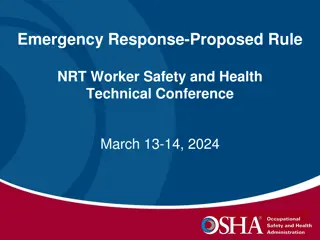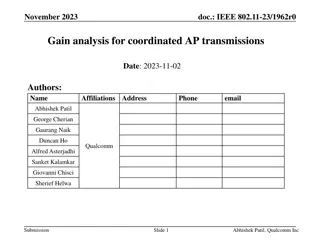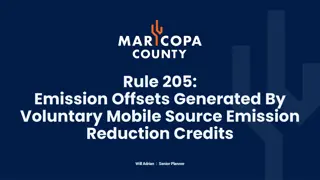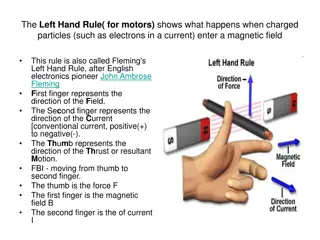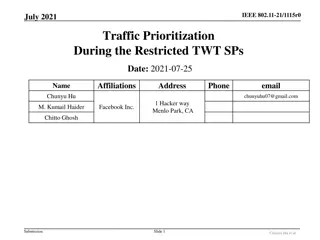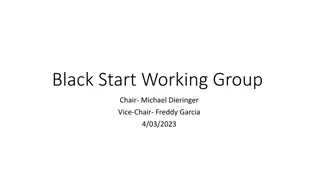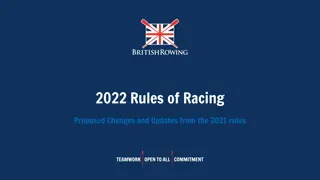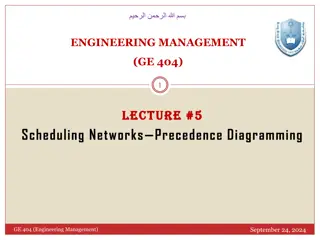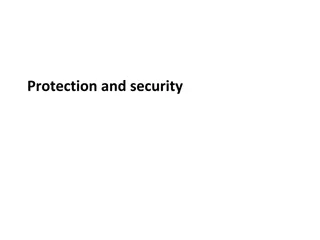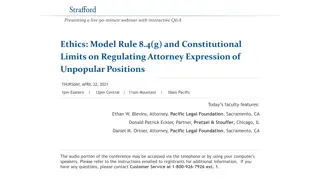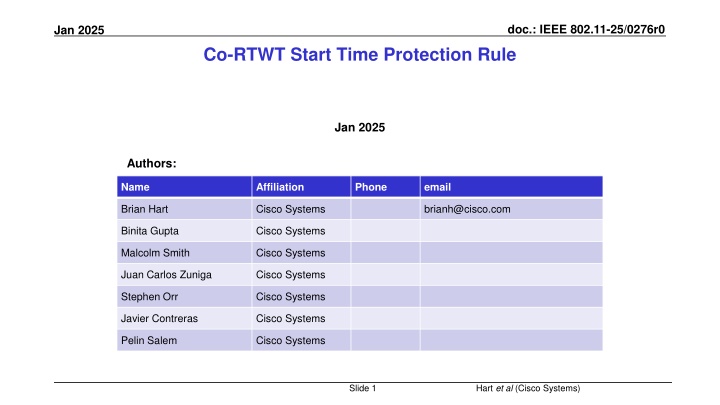
IEEE 802.11-25/0276r0 January 2025 Co-RTWT Start Time Protection Rule
"Learn about the Coordinated RTS/CTS Without Turnaround (Co-RTWT) mechanism in IEEE 802.11 standard for coordinating Access Points (APs) schedules, respecting Start Time Protection Rule (STPR), and dealing with real-world scenarios like clock skew and mobile APs."
Download Presentation

Please find below an Image/Link to download the presentation.
The content on the website is provided AS IS for your information and personal use only. It may not be sold, licensed, or shared on other websites without obtaining consent from the author. If you encounter any issues during the download, it is possible that the publisher has removed the file from their server.
You are allowed to download the files provided on this website for personal or commercial use, subject to the condition that they are used lawfully. All files are the property of their respective owners.
The content on the website is provided AS IS for your information and personal use only. It may not be sold, licensed, or shared on other websites without obtaining consent from the author.
E N D
Presentation Transcript
doc.: IEEE 802.11-25/0276r0 Jan 2025 Co-RTWT Start Time Protection Rule Jan 2025 Authors: Name Affiliation Phone email Brian Hart Cisco Systems brianh@cisco.com Binita Gupta Cisco Systems Malcolm Smith Cisco Systems Juan Carlos Zuniga Cisco Systems Stephen Orr Cisco Systems Javier Contreras Cisco Systems Pelin Salem Cisco Systems Slide 1 Hart et al (Cisco Systems) -
doc.: IEEE 802.11-25/0276r0 Jan 2025 Situation (1/3) For Co-RTWT, the 11bn SFD calls out a) AP coordination and b) rigorous respect for the Start Time Protection Rule (STPR) SFD [1] section 3.10 has: Define mechanisms that enable APs to coordinate their rTWT schedule(s) and/or to ensure that one AP provides the protection of the rTWT schedule(s) of the other AP. NOTE TBD mechanisms including negotiation between 2 APs and advertisement. [Motion #48, [1] and [131-148]] If an AP extends the protection of the rTWT schedule of another AP, following negotiation or through other means, then: The AP shall ensure its TXOP ends before the start time of the corresponding OBSS rTWT SP(s) // = STPR Slide 2 Hart et al (Cisco Systems) -
doc.: IEEE 802.11-25/0276r0 Jan 2025 Situation (2/3) We Can Consider Three Kinds of AP Co-RTWT Scheduling AP scheduling can be: 1. TBTT-centric A BI is divided into M SPs Given up to N overlapping BSSs, each AP gets 1 SP every N of these SPs So SI = BI*N/M TUs, and time between start of adjacent SPs (and max SP duration) is BI*N/M TUs E.g., BI = 100 TU, M = [2 5 10 20 50 100 200 500 1000] SPs, time between the start of adjacent SPs (and the max SP duration) is [50 20 10 5 2 1 0.5 0.2 0.1] TUs respectively 2. Round-number-centric Each RTWT uses the same SI which is chosen to be suitable across a range of use cases E.g., a new SP starts every 2 msec, and each AP gets a SP every 12 msec [1] 3. Flow-centric Each Co-RTWT agreement corresponds to a flow (or a flow aggregate for very similar flows) E.g., one agreement provides a SP every 20.01 msec and another agreement provides a SP every 16.65 msec Slide 3 Hart et al (Cisco Systems) -
doc.: IEEE 802.11-25/0276r0 Jan 2025 Situation (3/3) We Need to Design for Six Real-World Realities 1. Typical periodic flows nominally operate at a mix of rates 50/60/72/80/90/120/1000 Hz (etc) 2. The typical Beacon Intervals is BI = 100 TU (102.4 msec) (But there are rarer exceptions) 3. There may be (typically is) clock skew between networks 1. And potentially between APs of in same network 4. Connectivity between networks may be multihop: A B C D E Plus: branches, loops, and one-way connectivity Especially common in apartment buildings, malls, multi-tenant office buildings and dense urban (etc) 5. APs can be mobile: Carried by people Mounted on cars, buses, trains, ships (planes can be ignored, for now) 6. Beacons + groupcast (including MBSSID Beacons) TBTTs are best addressed as a further flow for Co-RTWT Slide 4 Hart et al (Cisco Systems) -
doc.: IEEE 802.11-25/0276r0 Jan 2025 Problem (1/2) An adequate level of AP Coordination between networks is NOT easy to assure Very hard to ensure that overlapping networks select a common timebase While encouraging use of GNSS as the reference time source is (very) desirable, globally mandating use is unrealistic given 802.11 s (deep) indoor use cases Without a common timebase, initially well-spaced SP start times will drift and can become closely spaced Problem for TBTT-centric, Round Number-centric; N/A for Flow-centric Very hard to ensure that overlapping networks select a common SI (or (sub)multiples thereof) A one-size-fits-all mandate will be ill matched to dense-urban vs rural vs automated manufacturing / warehousing A one-size-fits-all mandate may not be future proofed to new technologies Do we pick 1./[50, 60, 72, 80, 90, or 1000] Hz, or [20, 16, 14, 12, 11, or 1] TU or [3 6 or 12] msec or what? Problem for TBTT-centric, Round Number-centric; impossible for Flow-centric Even if we could find a common timebase and SI, how do APs space out their Service Start Times? Given the variable number of OBSS APs, mobile APs, APs changing to/from this channel, etc Note: This is really talking about AP radios since this ignores multiple colocated BSSIDs Problem for TBTT-centric, Round Number-centric; N/A for Flow-centric Slide 5 Hart et al (Cisco Systems) -
doc.: IEEE 802.11-25/0276r0 Jan 2025 Problem (2/2) Essence of the challenge Even with the best will in the world, at network boundaries we must anticipate that the start times of SPs will intermittently but regularly land very close to each other: Either persistently close (due to drift) or randomly close (e.g., due to 102.4 msec and 16.667 msec periods) The next OBSS AP s SP start time could be later by 0.001, 0.01, 0.1, 1, or 10 msec If the next SP is a very short time later, then the following SFD language means that an AP s SP might be vastly truncated, such that the AP cannot meet its underlying QoS/determinism goals The AP shall ensure its TXOP ends before the start time of the corresponding OBSS rTWT SP(s) We need something more nuanced Beacons in network 1 Beacons in network 2 Co-RTWT B in network 2 Co-RTWT A in network 1 After drift, SPs from Co-RTWTs A and B are highly-overlapping, and SPs from Co-TWT A get a minimal SP duration SPs are initially non-overlapping with full SP duration available Slide 6 Hart et al (Cisco Systems) -
doc.: IEEE 802.11-25/0276r0 Jan 2025 Solution STPR Flexibility AP A determines that the start time of the next SP of AP B (e.g., from a different administrative domain) closely follows the start time of AP A s SP Sidebar: Almost always the situation is reciprocal: i.e., later, AP B will determine that the start time of AP A s next SP closely follows the start time of AP B s SP 11bn should define how AP A and AP B may negotiate an exception to the SFD s STPR rule For example, AP A can establish a TXOP that extends past the start time of AP B s SP if, in exchange, AP A determines the medium resources needed by AP B during the ICF/ICR exchange at the start of AP A s SP, and allocates commensurate medium resources to AP B during the TXOP With fairness guardrails if the combined total would exceed the TXOP limit: e.g., mutual downscaling Medium resources = time resources (Co-TDMA); could consider spatial resources too (Co-SR and/or Co-BF) Two Co-RTWT SPs with inviolate STPR Converted to Co-TDMA TXOP with leading ICF+ICR Co-RTWT B in network 2 Co-RTWT B in network 2 Co-RTWT A in network 1 Co-RTWT A in network 1 Slide 7 Hart et al (Cisco Systems) -
doc.: IEEE 802.11-25/0276r0 Jan 2025 Summary It is very challenging for APs to coordinate their Co-RTWT schedules, especially APs in different administrative domains A likely side-effect is that the start times of different APs SPs could be pseudo-randomly very close (0.001 / 0.01 / 0.1 / 1 msec apart) Due to different timebases, different SIs, mobile APs, etc Either persistently close (due to drift) or randomly close (e.g., due to 102.4 msec and 16.667 msec periods) We propose a simple fix: APs can negotiate with each other to allow mutually-agreeable exceptions to the Co-RTWT STPR rule Slide 8 Hart et al (Cisco Systems) -
doc.: IEEE 802.11-25/0276r0 Jan 2025 Strawpoll 1 Do you agree to add the following text to the 11bn SFD: Do you support defining protocol for an AP with a runt Co-RTWT SP, due to the imminent start time of another AP s Co-RTWT SP, to negotiate a more balanced allocation of wireless resources with the other AP? Y / N / A Slide 9 Hart et al (Cisco Systems) -
doc.: IEEE 802.11-25/0276r0 Jan 2025 References [1] 23/1962, Gain analysis for coordinated AP transmission , Abhishek Patil Slide 10 Hart et al (Cisco Systems) -
doc.: IEEE 802.11-25/0276r0 Jan 2025 Backup Slide 11 Hart et al (Cisco Systems) -


